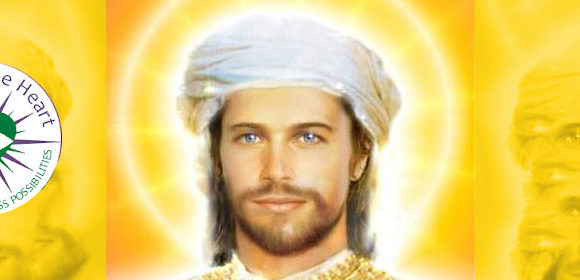Names carry deep meaning, often reflecting cultural values, spiritual beliefs, and timeless wisdom. In some Jewish traditions and interpretations, the name Nasheema is linked to the idea of the divine presence within the human soul. While variations of the term may appear differently across languages and texts, it resonates strongly with the Jewish understanding of the soul as a vessel of God’s essence.
This concept reminds us that each individual carries a spark of divinity – a sacred connection that links the human to the eternal. Let’s explore the deeper meaning behind Nasheema, its roots, and its spiritual significance.
The Meaning of Nasheema
The name Nasheema is believed to derive from the Hebrew root neshama (נְשָׁמָה), which translates to “soul” or more literally, “breath.” In Jewish mysticism and theology, the neshama represents the purest aspect of the soul, the part that remains eternally connected to God.
Breath is a powerful symbol in many spiritual traditions. In Judaism, the act of God breathing life into Adam – “And He blew into his nostrils the breath of life, and man became a living soul” (Genesis 2:7)—is seen as the moment when divine essence entered humanity.
Thus, Nasheema (or neshama) signifies:
- The breath of God within us.
- The divine spark that animates our being.
- A reminder that life itself is sacred and connected to a higher source.
The Soul in Jewish Thought
Jewish mysticism, especially the Kabbalistic tradition, describes the soul as having multiple layers:
- Nefesh – The vital, life-force energy, often associated with physical existence.
- Ruach – The spirit, connected to emotions and moral qualities.
- Neshama (Nasheema) – The divine soul, linked to higher consciousness and the presence of God.
- Chaya – The level of soul that transcends individuality, connected to divine life-force.
- Yechida – The deepest essence, where the soul is fully one with God.
Among these levels, the Neshama is seen as the bridge between the human and the divine. It is the part of the soul that never becomes impure or disconnected; it remains eternally holy, no matter what a person experiences in life.
Nasheema as the Presence of God Within
When we refer to Nasheema as the presence of God within, we recognise that divinity is not distant or abstract. Instead, it dwells in every person as an intimate, life-giving force. This understanding carries several spiritual implications:
- Every person is sacred. Since the divine breath animates all beings, we are inherently valuable and worthy of love and respect.
- We are never truly separate from God. Even when we feel lost or disconnected, the Neshama remains pure and unbroken.
- Life is a partnership with the divine. The soul’s purpose is to bring light, kindness, and holiness into the world, reflecting its divine origin.
This idea aligns with a famous teaching from the Talmud: “The soul that You have placed within me is pure.” Each morning, Jewish prayers include gratitude for the gift of the Neshama, acknowledging that it belongs to God and returns to Him after life.
Breathing as a Spiritual Practice
Since Nasheema is connected to “breath,” it invites us to see breathing as more than a biological function—it becomes a spiritual reminder. Every breath we take can be seen as a subtle prayer, a continuous exchange between the physical and the divine.
This concept parallels practices like meditation, mindful breathing, and prayer, which help us reconnect to the deeper awareness of God within. By pausing to notice the breath, we return to the present moment and acknowledge the source of life itself.
The Universal Message of Nasheema
While rooted in Jewish thought, the idea of Nasheema resonates beyond any single tradition. Across cultures, the breath of life is seen as sacred. In Christianity, the Holy Spirit is sometimes described as a breath or wind. In Hinduism, prana is the vital life force that flows through all beings. In many indigenous traditions, breath symbolizes the Creator’s ongoing presence.
This universal symbolism reminds us that the presence of God, or the divine, is not confined to a temple or a sacred text but is alive in every human heart.
How to Connect with Your Nasheema
If Nasheema is the divine presence within, how can we nurture this awareness in daily life? Here are a few simple practices:
- Morning Reflection
Begin the day by acknowledging your soul. In Jewish tradition, the prayer Modeh Ani expresses gratitude for the return of the soul each morning. - Mindful Breathing
Take a few minutes to breathe deeply and consciously, recognizing each breath as a gift from the divine. - Acts of Kindness
Since the soul is a spark of God, aligning with its purpose means living with compassion and integrity. - Prayer or Meditation
Spend time in quiet connection, listening inwardly to the still, small voice of the soul. - Learning and Growth
Study wisdom teachings that help you understand the divine nature of the self and the world.
Final Thoughts
The name Nasheema is more than just a beautiful word. It carries a profound reminder of who we truly are. It reflects the breath of God within, the sacred spark that connects humanity to the divine.
In a world that often feels chaotic and disconnected, remembering the Nasheema can bring comfort and clarity. It reminds us that no matter what we face, the soul within remains pure, whole, and eternally linked to its Creator.
By honouring this inner presence, we honour God, ourselves, and the sacredness of all life.








